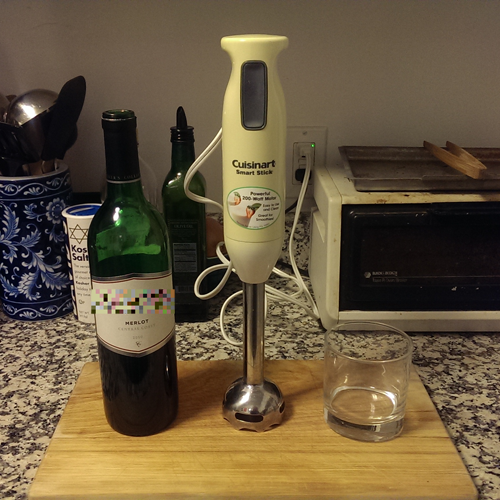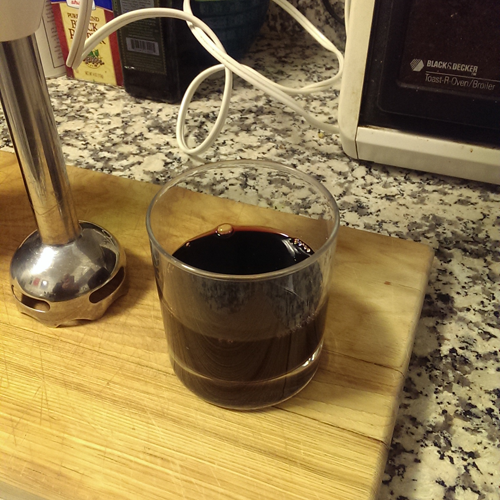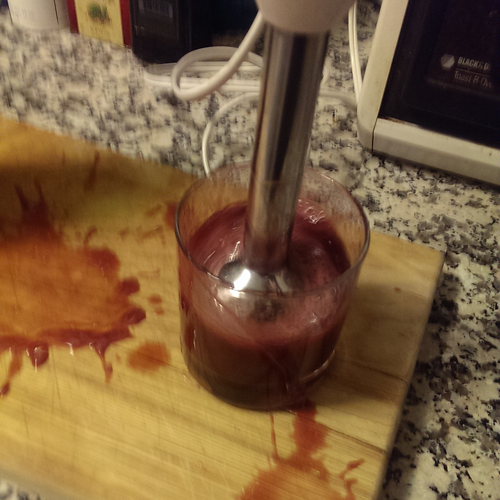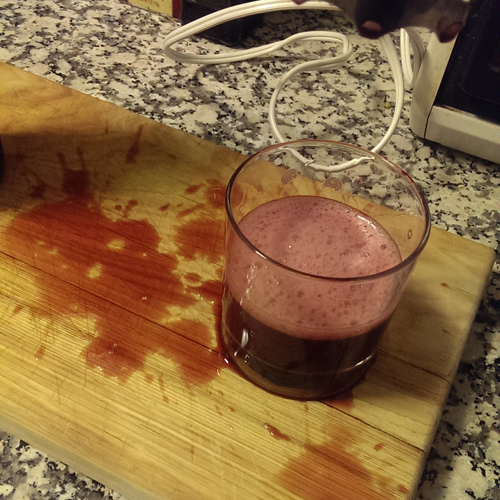It was cold. Really really cold. And snowy. So we opened a bottle of wine. Wouldn’t you? Well, it wasn’t a great bottle of wine, sort of young and rough around the edges. But we’d opened it and we weren’t going out for another one. (Yes, there were other bottles in the house, but who wants to waste wine??)
I’d heard about hyperdecanting before but had generally been satisfied with regular decanting, indeed pretty happy with just pouring stuff in a glass and drinking it. But hey, what could possibly go wrong? I gathered the equipment.
If you haven’t guessed, “hyperdecanting” is the practice of subjecting your wine to a blender for a minute or so in order to aerate it fully if aggressively and settle out unruly flavors. Some say it should be called “hyperaerating” and I guess I’d be one of them.
One last taste for control purposes. Not bad but not great. What could possibly go wrong?
You may want to use a deeper container or a blender with a cap. Just a thought.
Once you let the pinkish foam settle out – it’s faster than you’d think – it’s ready to quaff. The results? Surprisingly different post-blending. It won’t be mistaken for a totally different bottle, but it’s not the same either. It’s smoother, more integrated, fewer rough edges in the finish, more Dr. Brown’s black cherry than Robitussin.
Would the results have been the same if we’d just decanted like civilized people and waited a while? An experiment for another day. Stay tuned. At least now you know what to do with your Beaujolais Nouveau.





Interesting technique, but I’m more distressed by the wasted wine.